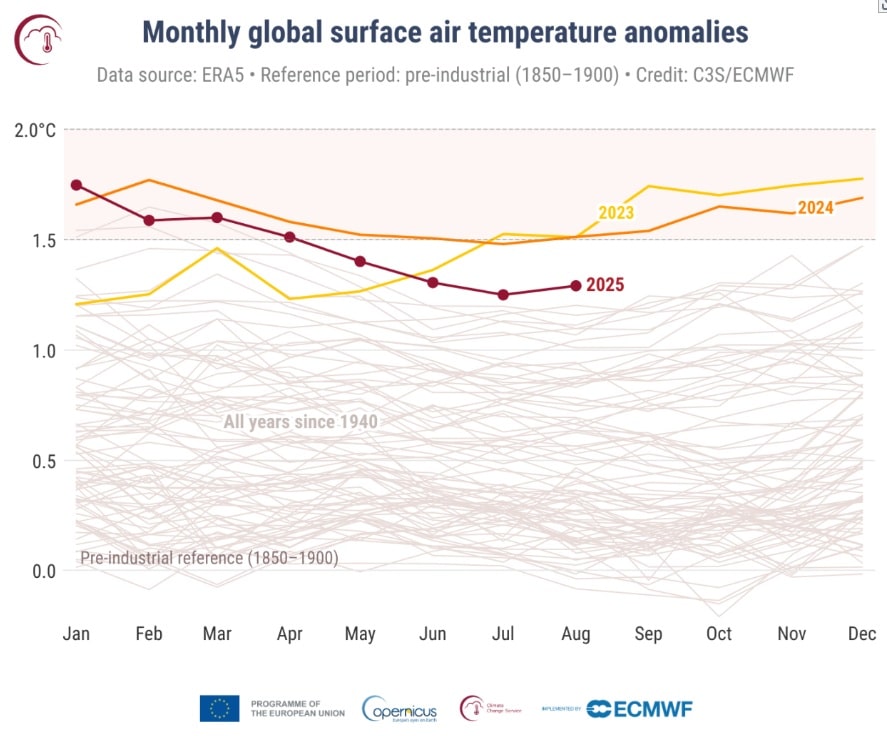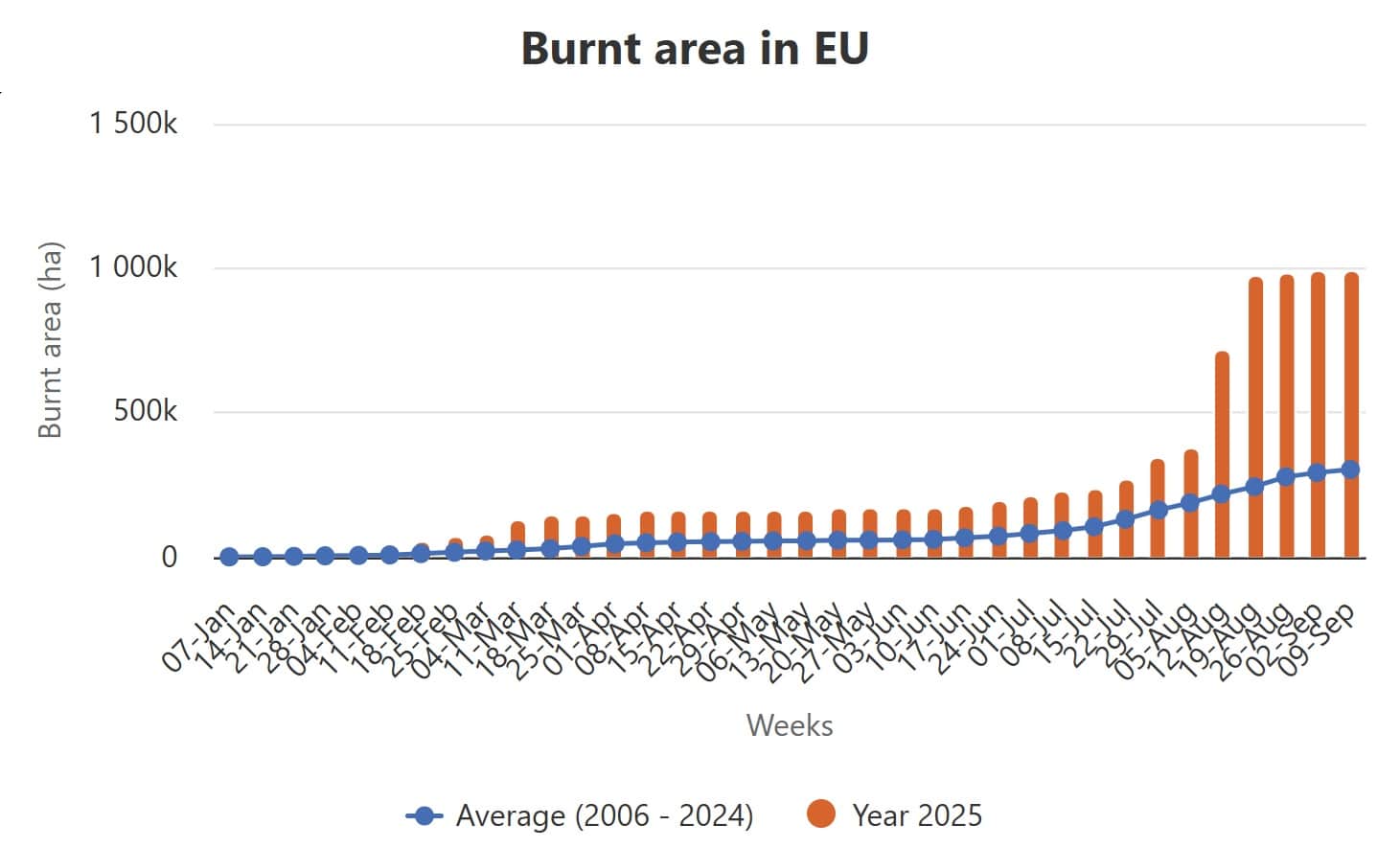Stockholm (NordSIP) – For once, data published by the EU’s Copernicus Climate Change Service(C3S) suggests that this year did not break new temperature records in Europe. However, the differences in climate between Southwestern and Northeastern Europe mean that while the latter experienced cooler-than-average temperatures, the first witnessed the opposite. In parallel to this disproportionate heat burden on southern Europe, the region also experienced unusually large and damaging forest fires.
According to C3S, the average temperature over European land for August 2025 was 19.46°C, a mere 0.30°C above the 1991-2020 average for that month. In effect this means that this August did not make it into the top 10 warmest Augusts on record. This contrasts somewhat with the situation with the world at large, which witnessed the third-warmest August on record globally
“August 2025 was the third-warmest on record globally. In southwest Europe, the month brought the third major heatwave of the summer, accompanied by exceptional wildfires. With the world’s ocean also remaining unusually warm, these events underline not only the urgency of reducing emissions but also the critical need to adapt to more frequent and intense climate extremes.” Samantha Burgess, Strategic Lead for Climate at ECMWF.

Considering the heterogeneous distribution of heat during the month can help understand the wildfires mentioned by Burgess. In fact, while Western Europe experienced the most pronounced above-average air temperatures in Europe, a large part of northern and Eastern Europe experienced cooler-than-average temperatures. The Iberian Peninsula and southwest France were particularly affected by heatwave conditions, causing the aforementioned wildfires.
Statistics regarding forest fires this summer paint a tragic picture. According to the European Forest Fires Information System, 994,363 hectares (ha) of forest burned in Europe between the start of the year and September 9th. This compares to 238,574ha during the same period last year. The average for the same period over the past 19 years (2006-2024) is of 303,162 ha of fires. As the figure below shows, the vast majority of these area burned during August.

Estimates suggest that 39.97 Mt of CO2 were emitted as a result of these fires since the beginning of the year, which is over three times the 12.57 Mt during the same period last year. Reports suggest that total damages from the fires in Spain amounted to €32 billion.




